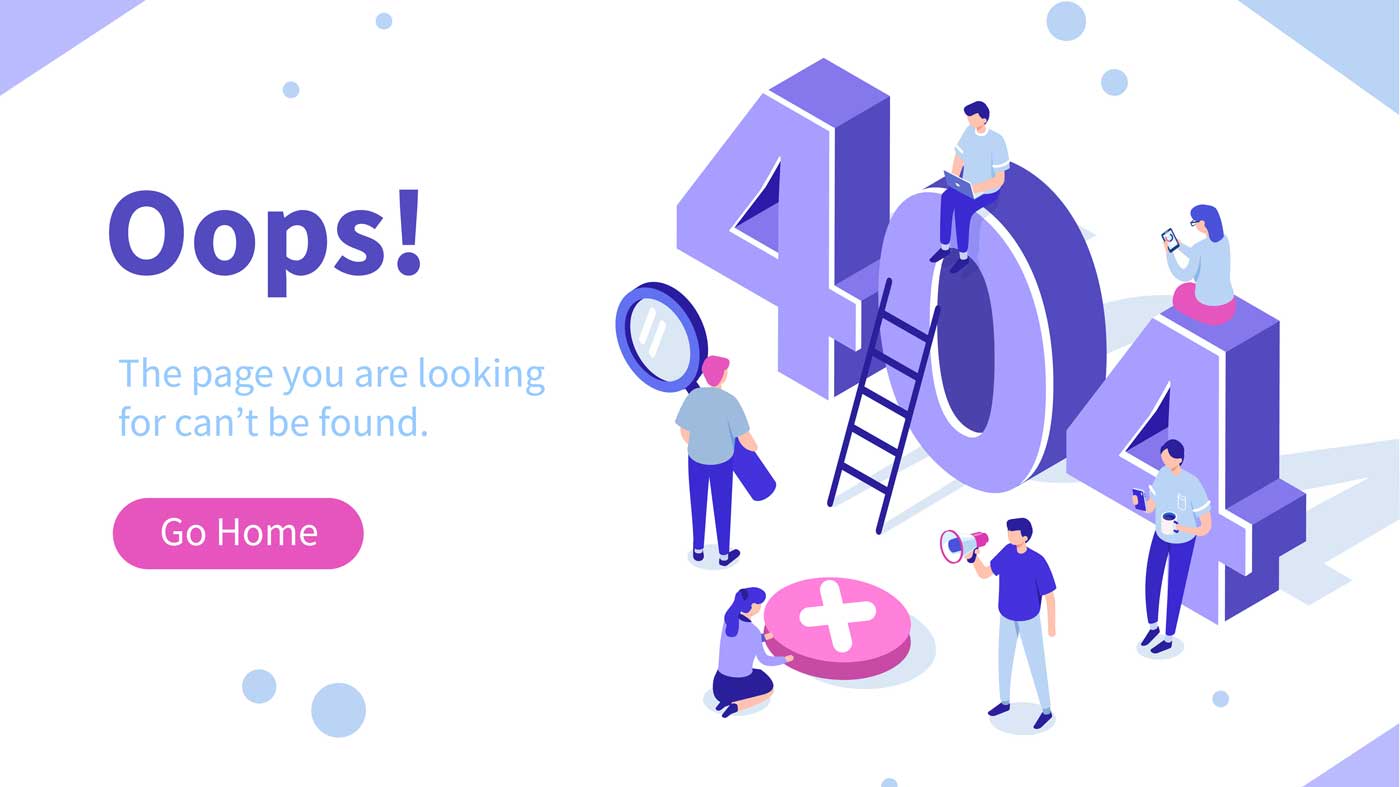I’m sure you’ve run into an error message when attempting to look up information on the web at some point. Not only does this lead to a frustrating experience, but it can also be a detriment if you are the website owner – especially when it comes to receiving a 404 error.
This specific error will appear when a visitor attempts to access a page on your website that the server fails to locate.
It becomes a dead end for the customer. This can lead to the loss of prospective clientele and may also damage your brand’s reputation.
The good news is that you can avoid losing traffic and potential consumers by creating a custom 404 error page for your site.
The Benefits of Creating a Custom 404 Page
There are a few common reasons for a visitor receiving a 404 error. Either they typed in the URL (web address) incorrectly or clicked on a link to a page that is broken or no longer exists.
Below is an example from smallbiztrends.com of what a consumer might see when they receive this error:
And what happens when a visitor is met with something like this? They will likely leave your page for another, and you’ll have lost a potential client, lead, or sale.
You can correct this, however, by creating a custom 404 page for your site.
Why would you want to do this?
Below are a few benefits to reap when you make the time to personalize this page versus using a generic one:
- Reduces bounce rates
- Keeps visitors engaged while on your site. A customizable page is more likely to see them stay on your page instead of jumping back to the search engines – which happens quite often when an unbranded 404 page pops up.
- Aids in building trust. This connection can begin when you take the time to ensure their needs are fully met and not derailed.
- Promotes brand consistency throughout your website. Generic 404 pages are unbranded and can lead to a jarring experience for potential or existing clientele.
A customized 404 page will not leave your visitor in the lurch as to what they should do next and offers reassurance that the error has nothing to do with them.
Can I Build My Own 404 Page?
If your website is built on a Content Management System (CMS) such as WordPress, you can probably create this custom page on your own – check out this “How To” link for Wordpress: Creating an Error 404 Page.
If it is a hand-coded site (or you just don’t have the time), you will want to get with your website designer or developer to assist with this setup.
You might also want to look at the following link called Redirection. It’s a free plugin that can help monitor your 404 errors and assist in setting up redirects when possible: Redirection
If you believe you can take care of any redirects on your own, it’s still a good idea to reach out to your web developer the first time or two. It’s easy to make mistakes when you haven’t walked through this process. It would be beneficial to understand the ins and outs of setting one up instead of attempting to fix any errors made along the way.
Once you feel confident in taking care of the redirects yourself, it’s easy to monitor and make updates on your own going forward.
What To Include on a 404 Page
You can keep it simple and guide consumers to another page on your site, or turn it up a notch and incorporate a sales strategy into it.
A few examples of redirect links you might want to include on your page are:
- Search bar
- Navigation Tools (similar to those already posted throughout your site)
- Homepage Link
- Subscription Link
- Links to other popular pages on your site
- Add a video
- Call to Action Buttons
- Special Offers, such as a free download or e-book
Make sure to include your contact details and maybe impart some empathy or inject some humor into the situation. You want to leave your customers feeling valued during their experience on your site, especially when a detour is not what they had expected to find.
Creating a custom 404 page could also provide an opportunity for brand recognition on the outside. If you add a bit of creativity and make the page shareable, visitors can then repost it on other social media venues for their followers and others to view.
An error message shouldn’t be the reason you lose a potential customer. Taking the time to customize a 404 page will help prevent that from happening. Not only does it provide another opportunity to promote your product or service, but it can be an avenue utilized to build trust and increase brand loyalty by meeting the needs of your audience.










0 Comments